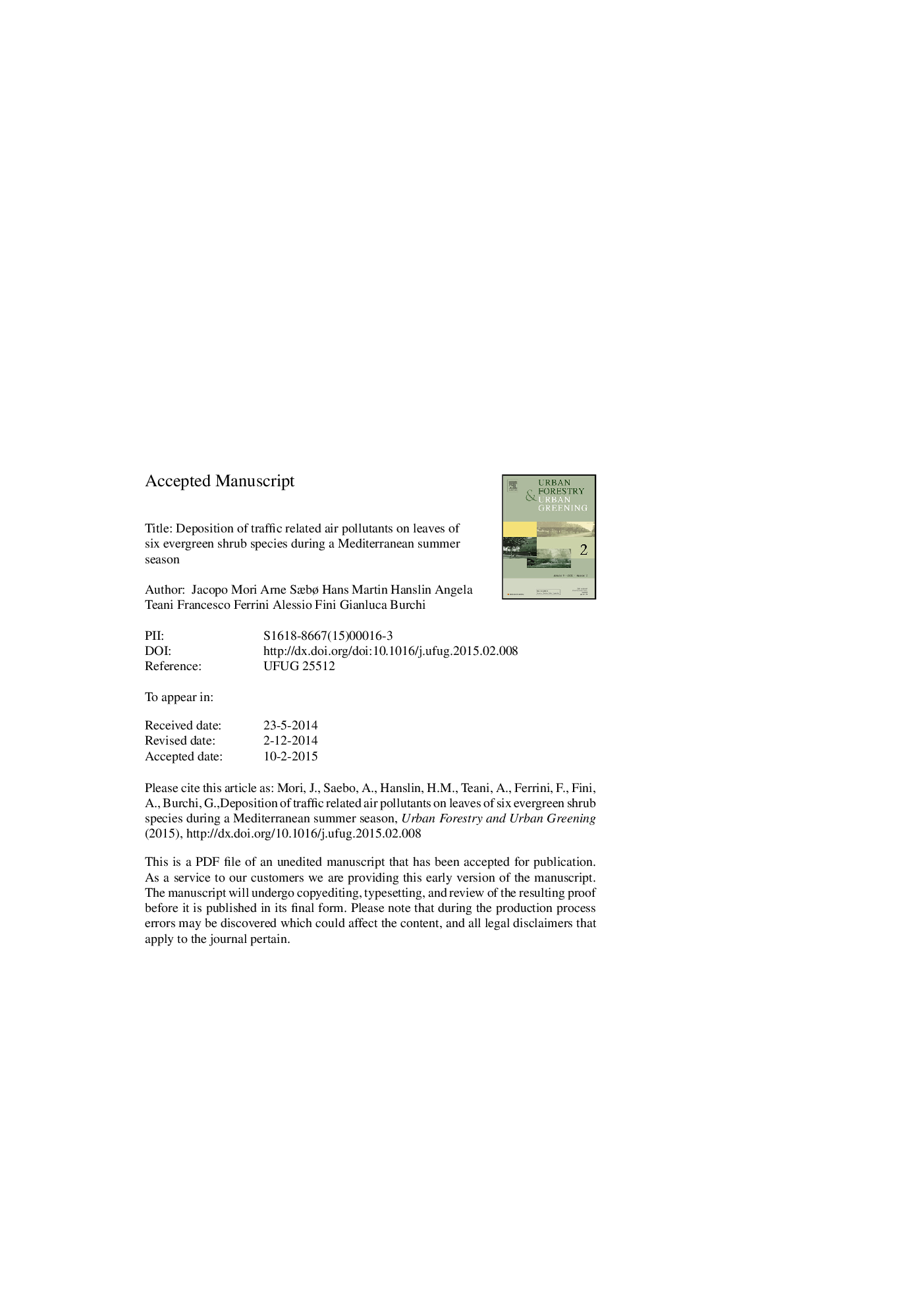| Article ID | Journal | Published Year | Pages | File Type |
|---|---|---|---|---|
| 10252135 | Urban Forestry & Urban Greening | 2015 | 43 Pages |
Abstract
Six evergreen broad-leaved shrub species (Viburnum tinus subsp. lucidum L., Arbutus unedo L., Photinia Ã fraseri Dress., Laurus nobilis L., Elaeagnus Ã ebbingei L., Ligustrum japonicum Thunb.) were tested for their capacity to accumulate pollutants on the surface of their current season leaves in a Mediterranean environment. Plants were planted along a road in 2010 and exposed to traffic pollution. Leaf element deposition (Al, As, Ba, Ca, Cd, Co, Cr, Cu, Fe, K, Li, Mg, Mn, Mo, Ni, Pb, Sb, Se, Tl, V, Zn) was analyzed six times from early summer to early autumn 2012. Particulate matter on leaves, element concentration of particulate matter in the air and meteorological parameters were measured. Elements on leaves were related to meteorological conditions to study the inter-relations. E. Ã ebbingei, P. Ã fraseri and V. lucidum were found to accumulate more pollutants, while L. nobilis and A. unedo were the lowest accumulators. A common trend of element depositions was found. Generally, elements increased from the first to the second sampling (28 June to 19 July) and, thereafter, decreased until the early autumn. Element depositions depended on species and meteorological parameters. Rain decreased the element accumulation on leaves, whilst an increase in wind velocity and element concentrations (in the air) tended to increase the presence of elements on leaves. Meteorological conditions were confirmed to be important factors modifying the dynamics of pollution deposition and their removal from leaves during a season.
Keywords
Related Topics
Life Sciences
Agricultural and Biological Sciences
Forestry
Authors
Jacopo Mori, Arne Sæbø, Hans Martin Hanslin, Angela Teani, Francesco Ferrini, Alessio Fini, Gianluca Burchi,
